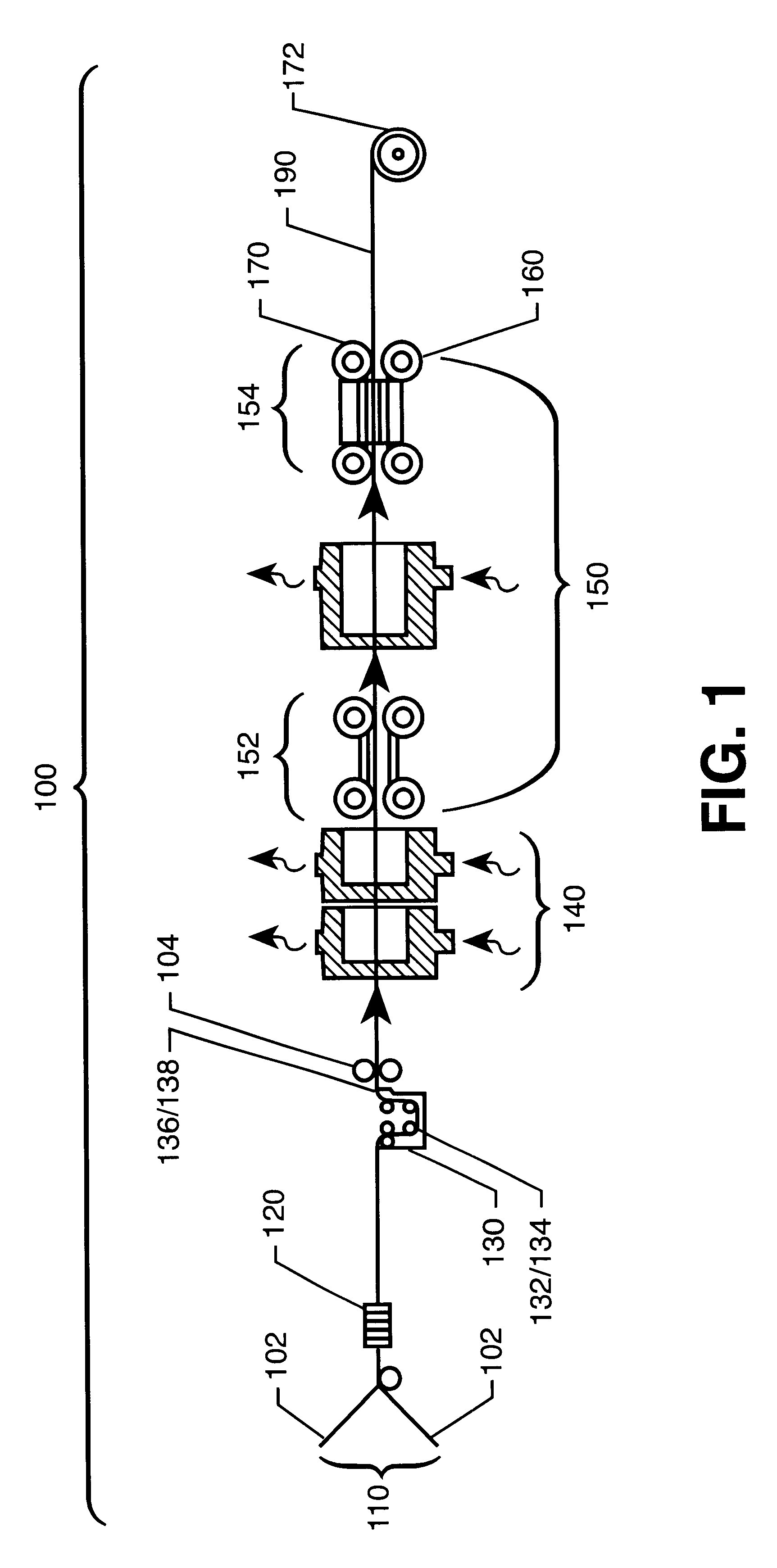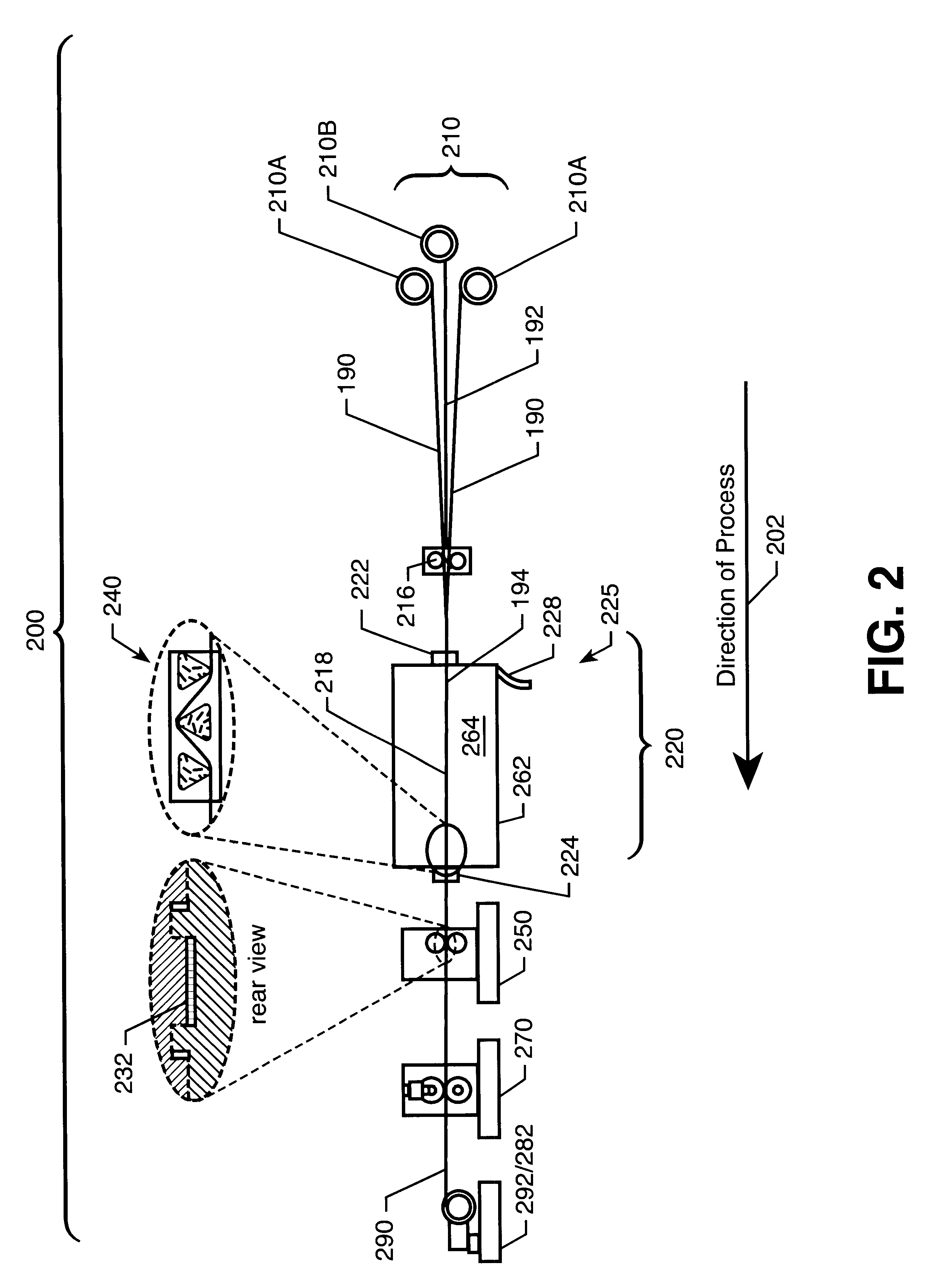Dry process for manufacturing hybridized boron fiber/carbon fiber thermoplastic composite materials from a solution coated precursor
a technology of thermoplastic composite materials and boron fibers, which is applied in the direction of adhesive processes with surface pretreatment, coatings, chemical instruments and processes, etc., can solve the problems of difficulty in uniform coating of fibers, and achieve the effect of increasing the center line distance, reducing the applied pressure gradient, and increasing the curvature radius of the bar surfa
- Summary
- Abstract
- Description
- Claims
- Application Information
AI Technical Summary
Benefits of technology
Problems solved by technology
Method used
Image
Examples
example 2
IM7 / IAX solution-coated precursor tape are creelled as illustrated in FIG. 2. The solution-coated precursor has a nominal resin content of approximately 36 wt %. A precursor tape with twenty-six ends is aligned and run into a furnace over a set of stationary bars. Another precursor tape with twenty-six ends is run through the furnace over another set of stationary bars located slightly below the first set. Both sets of bars are set at 400.degree. C. and allowed to equalize for one hour. Collimated boron ends are then run through the furnace between both sets of bars and precursor tapes, becoming encapsulated at the forming nips. The furnace zones are set to provide enough heat to devolitalize, imidized and melt the polymer prior to traversing the bars, and to heat the bars themselves to allow flow and spreading of the precursor tapes as they go over and under the bars. The forming die roller is nitrogen cooled to quench the hybrid tape to a specified shape. The line speed is control...
PUM
| Property | Measurement | Unit |
|---|---|---|
| particle size | aaaaa | aaaaa |
| width | aaaaa | aaaaa |
| width | aaaaa | aaaaa |
Abstract
Description
Claims
Application Information
 Login to View More
Login to View More - R&D
- Intellectual Property
- Life Sciences
- Materials
- Tech Scout
- Unparalleled Data Quality
- Higher Quality Content
- 60% Fewer Hallucinations
Browse by: Latest US Patents, China's latest patents, Technical Efficacy Thesaurus, Application Domain, Technology Topic, Popular Technical Reports.
© 2025 PatSnap. All rights reserved.Legal|Privacy policy|Modern Slavery Act Transparency Statement|Sitemap|About US| Contact US: help@patsnap.com



